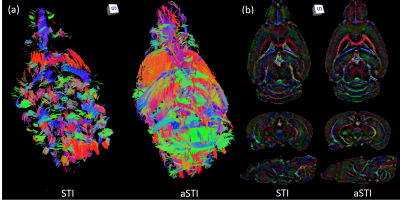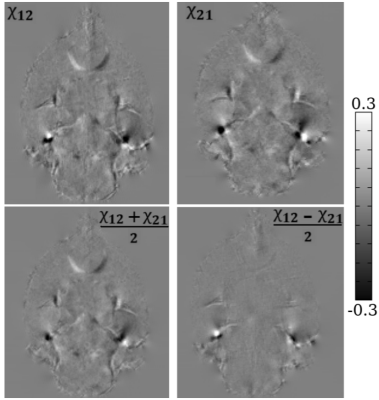Steven Cao1, Jingjia Chen1, Hongjiang Wei2, and Chunlei Liu1
1UC Berkeley, Berkeley, CA, United States, 2Shanghai Jiao Tong University, Shanghai, China
1UC Berkeley, Berkeley, CA, United States, 2Shanghai Jiao Tong University, Shanghai, China
Current Susceptibility Tensor Imaging (STI) solvers impose a symmetry constraint. We propose a reconstruction algorithm without this constraint, and instead enforce symmetry post-inversion. We justify this approach empirically by comparing mouse brain and kidney reconstructions.

(a) Fiber tracking results of the minor eigenvector,
where fibers shorter than 5mm are not shown (left: STI, right: aSTI). The aSTI
reconstruction recovers much more of the white matter fiber tracks. (b) The minor eigenvector direction
of the mouse brain, weighted by SI (left: STI, right: aSTI). The aSTI color
maps show more coherent fiber directions, and the SI also serves as a better
indicator of white matter.

The χ12 (top left) and χ21 (top right) terms in the aSTI
reconstruction, along with the symmetric (bottom left) and antisymmetric
(bottom right) decompositions. The antisymmetric part contains mostly noise and
streaking artifacts. As a result, after discarding the antisymmetric part, the
symmetric part shows reduced noise and streaking compared to the top two
images.